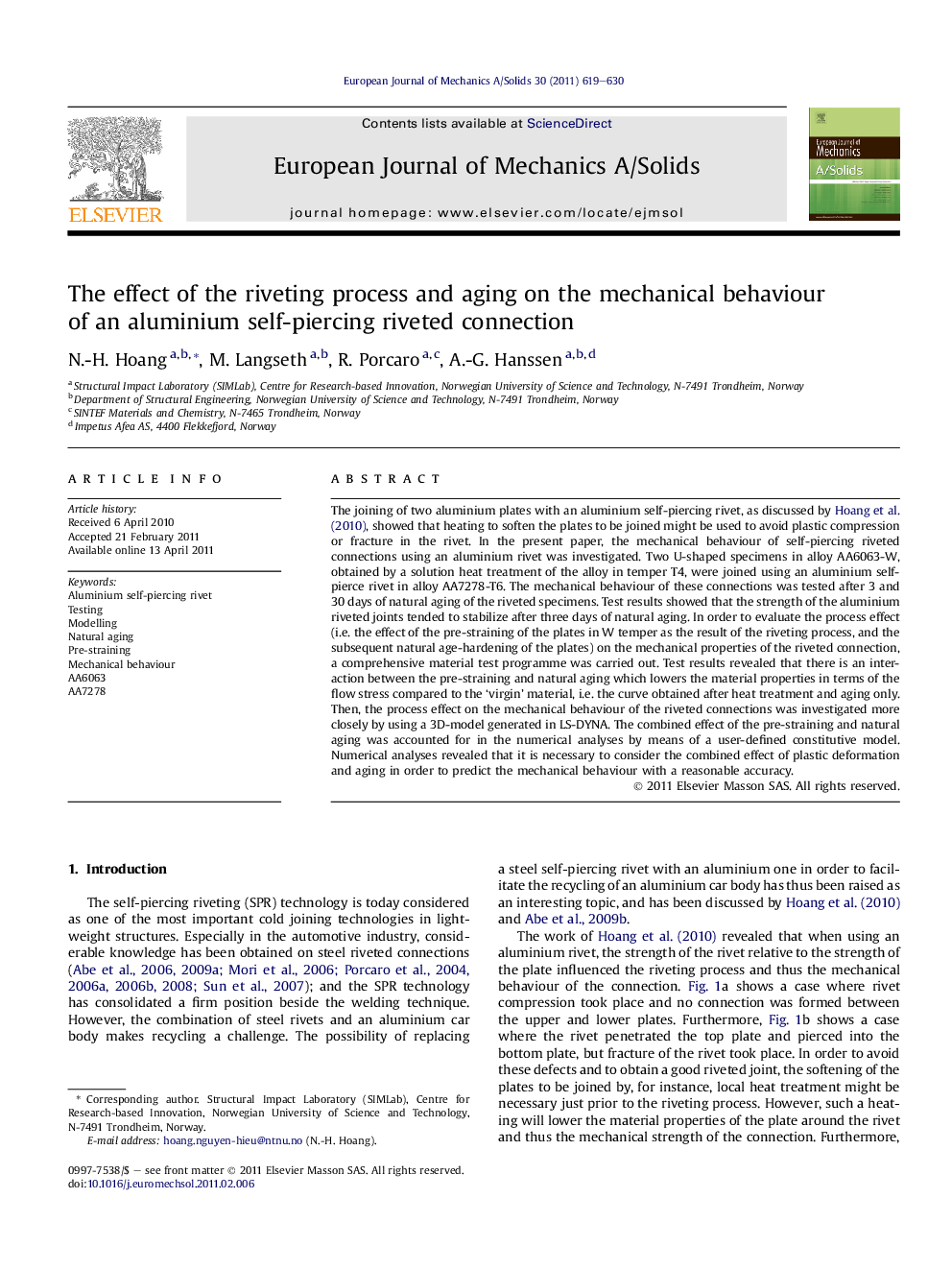| Article ID | Journal | Published Year | Pages | File Type |
|---|---|---|---|---|
| 774313 | European Journal of Mechanics - A/Solids | 2011 | 12 Pages |
The joining of two aluminium plates with an aluminium self-piercing rivet, as discussed by Hoang et al. (2010), showed that heating to soften the plates to be joined might be used to avoid plastic compression or fracture in the rivet. In the present paper, the mechanical behaviour of self-piercing riveted connections using an aluminium rivet was investigated. Two U-shaped specimens in alloy AA6063-W, obtained by a solution heat treatment of the alloy in temper T4, were joined using an aluminium self-pierce rivet in alloy AA7278-T6. The mechanical behaviour of these connections was tested after 3 and 30 days of natural aging of the riveted specimens. Test results showed that the strength of the aluminium riveted joints tended to stabilize after three days of natural aging. In order to evaluate the process effect (i.e. the effect of the pre-straining of the plates in W temper as the result of the riveting process, and the subsequent natural age-hardening of the plates) on the mechanical properties of the riveted connection, a comprehensive material test programme was carried out. Test results revealed that there is an interaction between the pre-straining and natural aging which lowers the material properties in terms of the flow stress compared to the ‘virgin’ material, i.e. the curve obtained after heat treatment and aging only. Then, the process effect on the mechanical behaviour of the riveted connections was investigated more closely by using a 3D-model generated in LS-DYNA. The combined effect of the pre-straining and natural aging was accounted for in the numerical analyses by means of a user-defined constitutive model. Numerical analyses revealed that it is necessary to consider the combined effect of plastic deformation and aging in order to predict the mechanical behaviour with a reasonable accuracy.
